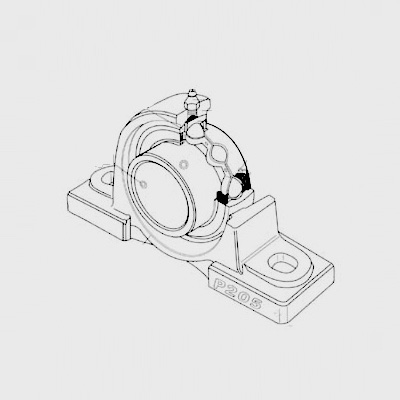
Jul . 10, 2024 20:43 Back to list
Comparison of deep groove ball bearings and angular contact bearings for various applications
Deep groove ball bearings and angular contact bearings are two of the most commonly used types of bearings in various industries, including automotive, aerospace, and manufacturing. Both types of bearings play crucial roles in supporting and facilitating the smooth operation of rotating machinery. While they serve similar functions, there are distinct differences between deep groove ball bearings and angular contact bearings that make each type suitable for different applications.
Deep groove ball bearings are characterized by their deep raceway grooves, which enable them to accommodate radial loads as well as moderate axial loads in both directions. These bearings are designed to operate at high speeds and are ideal for applications where the primary load is radial. Deep groove ball bearings have low friction and high rotational accuracy, making them popular in electric motors, gearboxes, and pumps.
On the other hand, angular contact bearings feature raceways that are designed to carry primarily axial loads in one direction. These bearings have a contact angle between the inner and outer races, which allows them to support both axial and radial loads simultaneously. Angular contact bearings are commonly used in applications where there are high-speed or high-precision requirements, such as in machine tools, robotics, and aerospace equipment.
One of the key differences between deep groove ball bearings and angular contact bearings is their load-carrying capacity and ability to accommodate various load types

deep groove ball bearings or angular contact. Deep groove ball bearings are more suitable for applications with primarily radial loads, while angular contact bearings are better equipped to handle combined axial and radial loads. Additionally, angular contact bearings are designed to withstand higher speeds and provide improved precision compared to deep groove ball bearings. Another distinguishing factor between these two types of bearings is their internal design and contact angles. Deep groove ball bearings typically have a contact angle of 0 degrees, meaning that they are only designed to accommodate radial loads. In contrast, angular contact bearings have contact angles ranging from 15 to 40 degrees, allowing them to support axial loads efficiently. In conclusion, both deep groove ball bearings and angular contact bearings are essential components in various industrial applications. While deep groove ball bearings are well-suited for radial loads and high-speed operations, angular contact bearings are more suitable for applications requiring combined axial and radial loads and increased precision. Understanding the differences between these two types of bearings is crucial in selecting the right bearing for specific applications and ensuring optimal performance and reliability.

deep groove ball bearings or angular contact. Deep groove ball bearings are more suitable for applications with primarily radial loads, while angular contact bearings are better equipped to handle combined axial and radial loads. Additionally, angular contact bearings are designed to withstand higher speeds and provide improved precision compared to deep groove ball bearings. Another distinguishing factor between these two types of bearings is their internal design and contact angles. Deep groove ball bearings typically have a contact angle of 0 degrees, meaning that they are only designed to accommodate radial loads. In contrast, angular contact bearings have contact angles ranging from 15 to 40 degrees, allowing them to support axial loads efficiently. In conclusion, both deep groove ball bearings and angular contact bearings are essential components in various industrial applications. While deep groove ball bearings are well-suited for radial loads and high-speed operations, angular contact bearings are more suitable for applications requiring combined axial and radial loads and increased precision. Understanding the differences between these two types of bearings is crucial in selecting the right bearing for specific applications and ensuring optimal performance and reliability.
Latest news
-
The Future of Deep Groove Ball Bearings For Extreme Applications
NewsJul.31,2025
-
Self-Lubricating Bearings: The Future of Agricultural Machinery Efficiency
NewsJul.31,2025
-
Nanotechnology in Ball Bearing Machines: The Future of Friction Reduction
NewsJul.31,2025
-
How Deep Groove Ball Bearings Are Tailored for Different Uses
NewsJul.31,2025
-
Energy-Efficient Machinery Bearings: Reducing Power Consumption in Large-Scale Ball Mills
NewsJul.31,2025
-
Deep Groove vs. Angular Contact: Which Ball Bearing Wins in High-Speed Applications
NewsJul.31,2025
